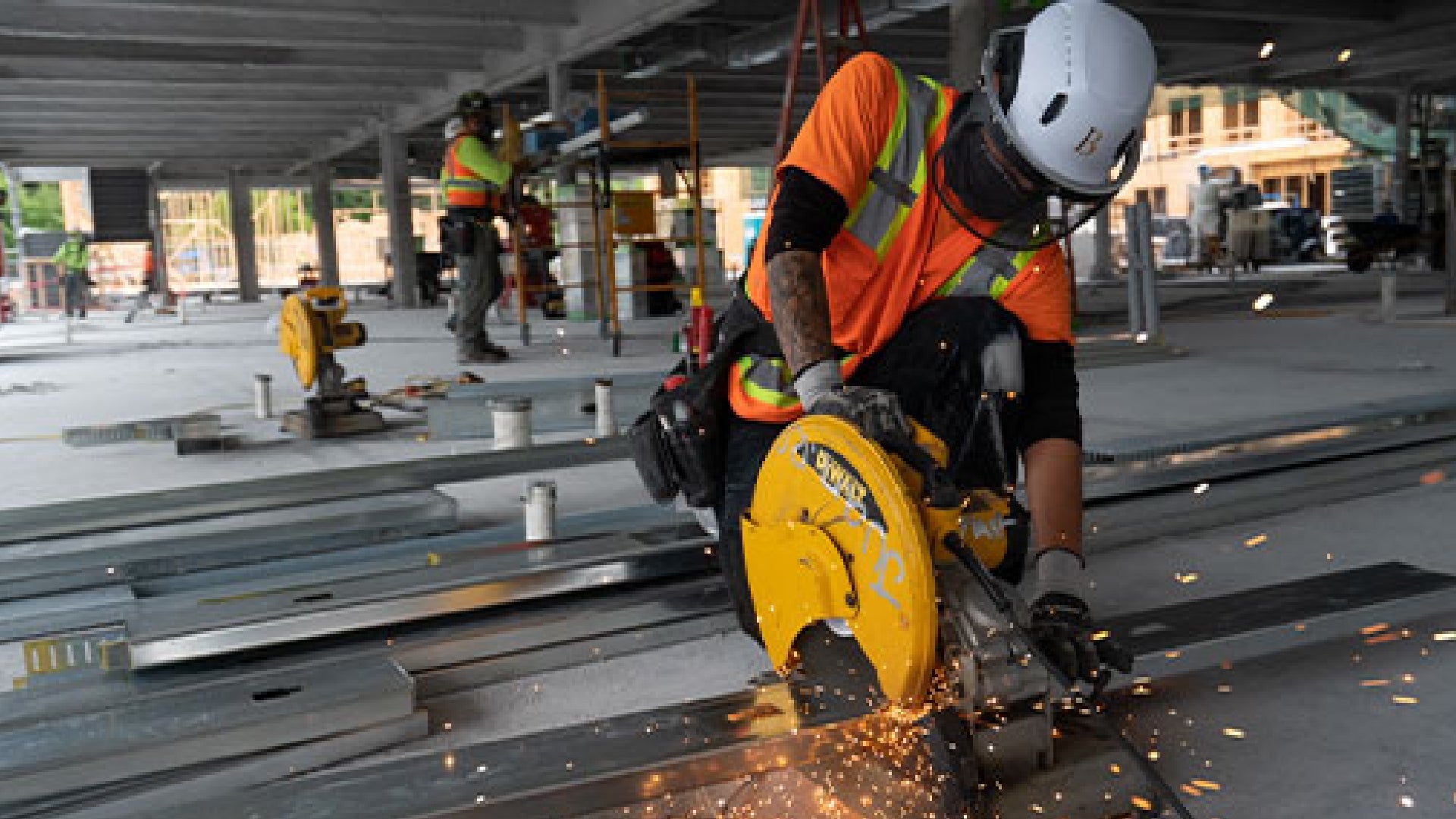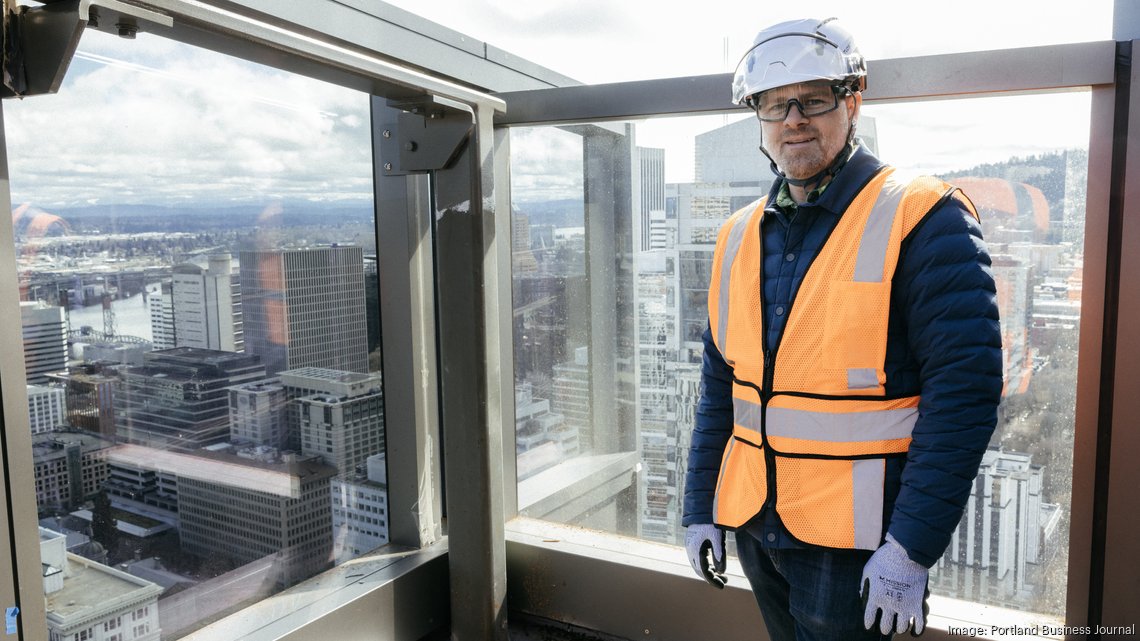Portland Business Journal | 2023 Makers and Manufacturers of the Year: Interview with Studson CEO Ryan Barnes
November 17, 2023
Studson uses technology, innovation to reinvent the hard hat
Company redesigns helmets to protect workers, keep them safer on the job
Jonathan Dale, Umpqua Bank’s regional executive vice president for the Pacific Northwest/ Mountain West recently had a “Meet the Manufacturer” conversation with Ryan Barnes, founder and CEO of Studson Inc., which produces head protection for the construction industry. Read on to learn more about the Oregon-based company.
Jonathan Dale:
You founded Studson in 2019. What have been the most impactful lessons you’ve learned? How have they shaped your company strategy?
Ryan Barnes:
A friend of mine owns a general contracting firm in Portland. In January 2018, we had a conversation about safety helmets. I was in the safety helmet space, but in bike and ski helmets. I went home and did some research and that’s when the idea came to me. I spent six months doing due diligence, trying to find a designer, establishing if I had interest through local investors, started to establish a board, and we incorporated in September 2019. Early January 2020, we had some designs to move forward with and ideas of how we were going to make a better helmet with more technology.
The biggest lesson I learned going into COVID was I quit my day job too early. My last day was March 20, 2020. It was pretty scary for a few months, but that’s what kicked it into gear. I had no other fallback. It was COVID, and people weren’t getting hired. COVID shaped resilience and determination. Failing was just not an option.
Supply chain, design, engineering, working remotely, the lengthy process of getting a product to market, actually producing a product — doing that all remotely and over Zoom calls was different. I didn’t necessarily know what normal was, because it was a new challenge for me. I came from a sales and marketing background.
We had some insight in 2019 that we had an opportunity and somewhat of a runway because there wasn’t anything in the market that was innovative in the trades for replacing the hard hat.
By the time we hit the market in August 2021, it had taken longer than we had hoped. Luckily, the market was shifting. The transition from the hard hat to the safety helmet is happening so fast, it’s unbelievable. The major commercial general contractors of the world are driving that; utility companies are now getting on board. Oil and gas is finally coming along. The standard hard hat is going to be extinct in probably five years.
Dale:
How have you been successful in balancing scale?
Barnes:
One of the challenges we had in the late half of 2020 and into 2021 that I didn’t foresee was delays. For almost a year, I had a salesperson with no product to sell. But what came of that was he built some amazing contacts across the country. When we got our first 150 samples, we had them shipped out the door in 48 hours because we had a list of all the safety directors across the country from large GCs to smaller ones that were waiting to get their hands on the first Studson samples. It gave us a little bit of a base before we actually had product in the warehouse. We had solid pre-orders. We already had demand before we had received our first product; it was validating. And then, it was, “This is gonna take off. When it does, we need to have inventory and be able to act.” Probably one of the mistakes we made was buying too much inventory before we could actually start to identify sell-through and demand. Luckily, we don’t have thousands of SKUs, so it’s pretty manageable, but we got ourselves into too much inventory.
Then it started to really take off in 2022. The demand was shifting because of the GCs driving this change to a chin strap and a safety helmet. We had one of the only Type II safety helmets on the market in early 2022, so there was a big opportunity. Before you knew it, we were sold through on too many SKUs. And then we had the opposite inventory issues. We’re getting much better at forecasting and understanding our demand and looking to the future.
Dale:
What is the lead time on your core products from when you say go to your manufacturer?
Barnes:
We can typically have it delivered here in 90 days. As we have become the largest industrial brand that they are manufacturing, we have booked windows every 30 to 60 days all year long. Every quarter, we give them an updated forecast. So our lead times are very manageable.
We’re getting more insight from our sales team, nationally, keeping us in the loop on big deals they’re working on. We’re working on a deal now that’s so large that we couldn’t fulfill it with all the inventory in our warehouse, so it’ll have to be produced, and they’ll have to be OK with some lead time.
Dale:
Where will Studson be in five years? What’s the roadmap to get there?
Barnes:
We want to be a $50 million-plus company by then. The roadmap is a combination of a few things; it’s product expansion. The global head protection market in the industrial space is about 3.4 billion today, and it’s growing rapidly. The North American market is easily a billion. No. 1, we have to scale our sales, our sales team. We need people all over the country, which we have, however, their territories currently are too large, so breaking those territories up. Second, scaling the product mix, having complementary accessories and continuing to expand. We started to dabble in cooling accessories this year. Heat stress is probably OSHA’s secondbiggest topic these days. There’s always emerging technology and different things that can be integrated into the helmet.
Probably the lowest-hanging fruit for us is expansion into other markets outside of the U.S. We’re currently going through the process of getting our helmets certified for CSA, Canadian Safety Association. And we’ve already done the testing for the European certification. We’re signing papers for a global strategic partnership with a European company that’s going to help us with distribution. The U.K. has broken off from the European Union, so they have their own certification now. That’s probably the third step we’ll take.
The testing and certification can be done in the next six months, but actually getting product into those markets, that’s more like a year. We’re hoping to be shipping helmets into western Europe and Scandinavia sometime before the end of next year.


